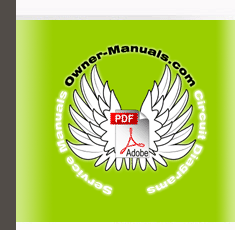|
|
|
Categories
|
|
Information
|
|
Featured Product
|
|
|
 |
|
|
There are currently no product reviews.
 ;
I am very happy with the owner's manual. I bought a used Casio and was so relieved that I was able to get a hold of a owner's manual. It was very easy to download the manual and I had no problems with printing it. Thank you! Nancy Whalen
 ;
The purchased manual is an high-quality scan of the original JVC paper-based Owner´s Manual. I am very satisfied!
 ;
Very satisfied with received document, all is right, Thank You very much, it was a Pleasure to work with You.
 ;
great site, the most easy and fastest way to find the manual you need, no 5 star because the manual was only available in german, but I speak german as well so no problem for me.
 ;
thanks for this download i got a pioneer bdp-lx70a blu-ray player and it had no manual i search everywhere on the internet and came across owner-manuals.com and i found that it was so easy to find and downloaded from this site if i ever need a manual again this would be the first place that i would come too thanks guys
English
Creating Your Own Sound Mode � Manual Mode
You can change SEA pattern to suit your preference. These changed settings can be stored in the MANUAL 1, MANUAL 2, and MANUAL 3 modes. � There is a time limit in doing the following steps. If the setting is canceled before you finish, start from step 1 again.
4 Press SET/DISPLAY again.
On the unit ONLY:
5 Turn 4 / ¢ to select one of
the MANUAL 1, MANUAL 2, and MANUAL 3 modes into which you want to store the SEA pattern.
1 Select one of the preset sound modes.
� If you want to add the surround elements in your SEA pattern, select one of the surround modes (D.CLUB, HALL, or STADIUM) before starting the procedure below. (See �Selecting the Sound Modes� on page 10.)
6 Press SET/DISPLAY again.
2 Press and hold SET/DISPLAY
until �SEA CONT� appears on the display.
The SEA pattern you have created are stored into the MANUAL mode selected in the above step.
To use your own sound mode
Select MANUAL 1, MANUAL 2, or MANUAL 3 mode when using the sound modes. See �Selecting the Sound Modes� on page 10.
Current level appears.
When you unplug the AC power cord or if a power failure occurs The setting will be erased in a few days. If this happens, set the manual sound modes again.
3 Adjust the SEA pattern.
1) Turn 4 / ¢ to select the frequency range to adjust (LOW, MID, HIGH). 2) Press 1 or ¡ to adjust the level (�3 to +3) of the selected frequency range. 3) Repeat steps 1) and 2) to adjust the level of the other frequency ranges.
� 11 �
|
|
 |
> |
|
